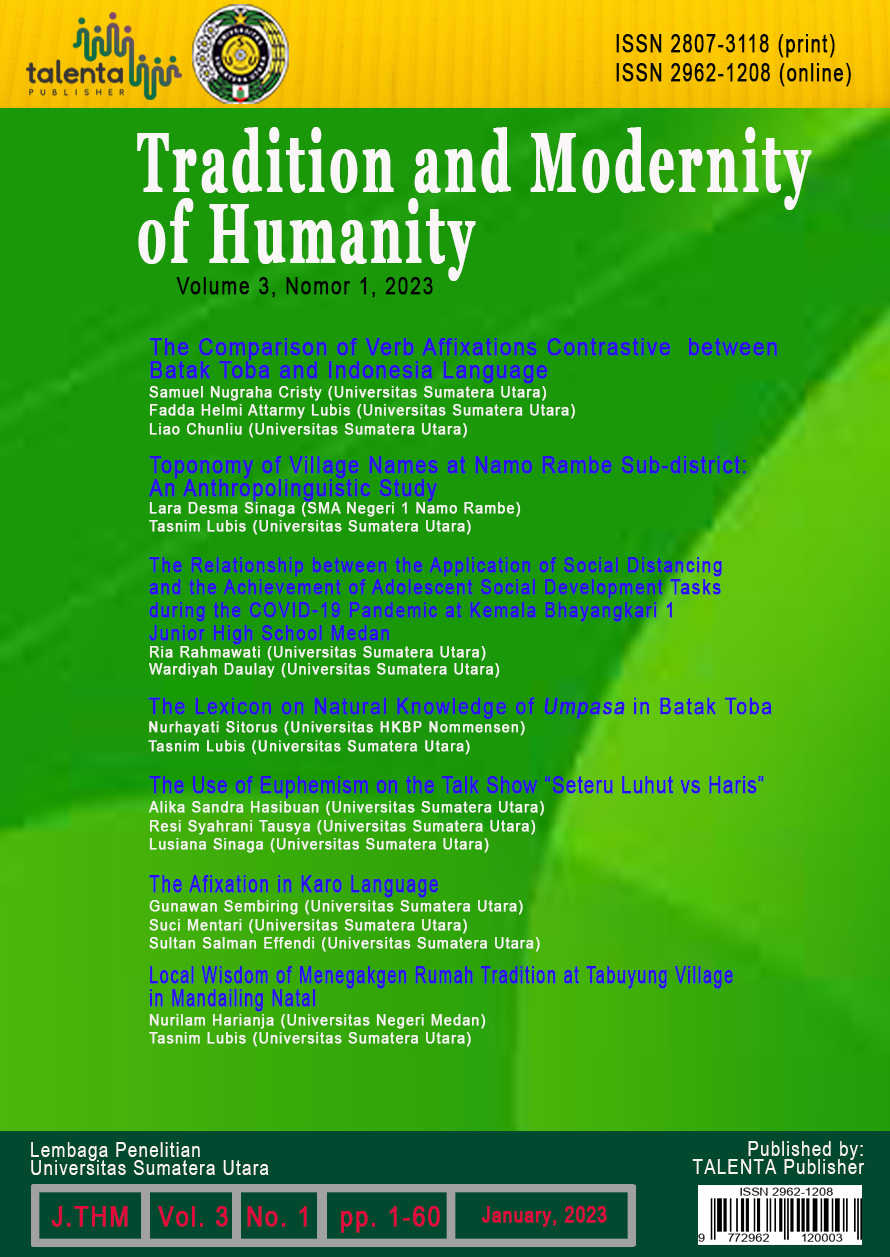The Afixation in Karo Language
DOI:
https://doi.org/10.32734/tmh.v3i1.11490Keywords:
Afixation, Pancur Batu traditional market, Karo languageAbstract
This study aims to reveal the process of affixation and potential forms in the Karo language at the Pancur Batu Traditional Market. The theory used in this paper is the theory proposed by experts in the field of morphology. The approach used is a generative morphological theory [1][2]. The basic units of the lexicon are "morphemes," and according to the lexicalist, Aronoff argues that "words" are the basis of all derivations. The morphophonemic process analysis consists of four subcomponents: 1) morpheme list, 2) word formation rules, 3) filter, and 4) dictionary. The data found verb-forming affixations, noun-forming affixations, adjective-forming affixations, reduplication with affixes, and potential forms in the Karo language. This study focuses on collecting and presenting qualitative data on affixation processes closely related to morphology. Therefore, this research is also called descriptive-qualitative research. In the potential formation of the Karo language, there are three possible forms: phonological, lexical, and semantic.
Downloads
Downloads
Published
Issue
Section
License
Copyright (c) 2023 Tradition and Modernity of Humanity

This work is licensed under a Creative Commons Attribution-ShareAlike 4.0 International License.






